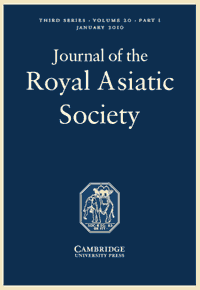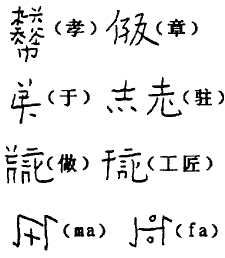The following is a guest post by Professor J. Marshall Unger of the Ohio State University’s Department of East Asian Languages and Literatures.
The challenge
On 18 November 2009, Mark Swofford posted an item on his website pinyin.info criticizing the way Google Translate produces Hanyu Pinyin from standard Chinese text. He concluded by saying, “Google Translate will also romanize Japanese texts written in kanji and kana, Russian texts written in Cyrillic, etc. But I’ll leave those to others to analyze.” So I decided to take up Swofford’s challenge as it pertains to Japanese. Using Google Translate, I romanized a news item from the Asahi of 6 December 2009:
| Original |
Google Translate |
| 6日午後4時35分ごろ、東京都千代田区皇居外苑の都道(内堀通り)の二重橋前交差点で、中国からの観光客の40代の男性が乗用車にはねられ、全身を強く打って間もなく死亡した。車は歩道に乗り上げて歩いていた男性(69)もはね、男性は頭を強く打って意識不明の重体。丸の内署は、運転していた東京都港区白金3丁目、会社役員高橋延拓容疑者(24)を自動車運転過失傷害の疑いで現行犯逮捕し、容疑を同致死に切り替えて調べている。 |
roku nichi gogo yon ji san go fun goro , tōkyō to chiyoda ku kōkyogaien no todō ( uchibori dōri ) no nijūbashi zen kōsaten de , chūgoku kara no kankō kyaku no yon zero dai no dansei ga jōyōsha ni hane rare , zenshin wo tsuyoku u~tsu te mamonaku shibō shi ta . kuruma wa hodō ni noriage te arui te i ta dansei ( roku kyū ) mo hane , dansei wa atama wo tsuyoku u~tsu te ishiki fumei no jūtai . marunouchi sho wa , unten shi te i ta tōkyō to minato ku hakkin san chōme , kaisha yakuin takahashi nobe tsubuse yōgi sha ( ni yon ) wo jidōsha unten kashitsu shōgai no utagai de genkō han taiho shi , yōgi wo dō chishi ni kirikae te shirabe te iru . |
| 同署によると、死亡した男性は横断歩道を歩いて渡っていたところを直進してきた車にはねられた。車は左に急ハンドルを切り、車道と歩道の境に置かれた仮設のさくをはね上げ、歩道に乗り上げたという。さくは歩道でランニングをしていた男性(34)に当たり、男性は両足に軽いけが。 |
dōsho ni yoru to , shibō shi ta dansei wa ōdan hodō wo arui te wata~tsu te i ta tokoro wo chokushin shi te ki ta kuruma ni hane rare ta . kuruma wa hidari ni kyū handoru wo kiri , shadō to hodō no sakai ni oka re ta kasetsu no saku wo haneage , hodō ni noriage ta to iu . saku wa hodō de ran’ningu wo shi te i ta dansei ( san yon ) ni atari , dansei wa ryōashi ni karui kega . |
| 同署は、死亡した男性の身元確認を進めるとともに、当時の交差点の信号の状況を調べている。 |
dōsho wa , shibō shi ta dansei no mimoto kakunin wo susumeru totomoni , tōji no kōsaten no shingō no jōkyō wo shirabe te iru . |
| 現場周辺は東京観光のスポットの一つだが、最近はジョギングを楽しむ人も増えている。 |
genba shūhen wa tōkyō kankō no supotto no hitotsu da ga , saikin wa jogingu wo tanoshimu hito mo fue te iru . |
Google’s romanization algorithm does a thoroughly mediocre job compared with what a human transcriber would do. To see this, compare the following:
| Google Translate |
human transcriber |
| roku nichi gogo yon ji san go fun goro , tōkyō to chiyoda ku kōkyogaien no todō ( uchibori dōri ) no nijūbashi zen kōsaten de , chūgoku kara no kankō kyaku no yon zero dai no dansei ga jōyōsha ni hane rare , zenshin wo tsuyoku u~tsu te mamonaku shibō shi ta . kuruma wa hodō ni noriage te arui te i ta dansei ( roku kyū ) mo hane , dansei wa atama wo tsuyoku u~tsu te ishiki fumei no jūtai . marunouchi sho wa , unten shi te i ta tōkyō to minato ku hakkin san chōme , kaisha yakuin takahashi nobe tsubuse yōgi sha ( ni yon ) wo jidōsha unten kashitsu shōgai no utagai de genkō han taiho shi , yōgi wo dō chishi ni kirikae te shirabe te iru . |
Muika gogo yo-ji sanjūgo-fun goro, Tōkyō-to Chiyoda-ku Kōkyo Gaien no todō (Uchibori dōri) no Nijūbashi-zen kōsaten de, Chūgoku kara no kankō-kyaku no yonjū-dai no dansei ga jōyōsha ni hanerare, zenshin o tsuyoku utte mamonaku shibō-shita. Kuruma wa hodō ni noriagete aruite ita dansei (rokujūkyū) mo hane, dansei wa atama o tsuyoku utte ishiki fumei no jūtai. Marunouchi-sho wa, unten-shite ita Tōkyō-to Minato-ku Shirogane san-chōme, kaisha yakuin Takahashi Nobuhiro yōgisha (nijūyon) o jidōsha unten kashitsu shōgai no utagai de genkōhan taiho-shi, yōgi o dō-chishi ni kirikaete shirabete iru. |
| dōsho ni yoru to , shibō shi ta dansei wa ōdan hodō wo arui te wata~tsu te i ta tokoro wo chokushin shi te ki ta kuruma ni hane rare ta . kuruma wa hidari ni kyū handoru wo kiri , shadō to hodō no sakai ni oka re ta kasetsu no saku wo haneage , hodō ni noriage ta to iu . saku wa hodō de ran’ningu wo shi te i ta dansei ( san yon ) ni atari , dansei wa ryōashi ni karui kega . |
Dō-sho ni yoru to, shibō-shita dansei wa ōdan hodō o aruite watatte ita tokoro o chokushin-shite kita kuruma ni hanerareta. Kuruma wa hidari ni kyū-handoru o kiri, shadō to hodō no sakai ni okareta kasetsu no saku o haneage, hodō ni noriageta to iu. Saku wa hodō de ranningu o shite ita dansei (sanjūyon) ni atari, dansei wa ryōashi ni karui kega. |
| dōsho wa , shibō shi ta dansei no mimoto kakunin wo susumeru totomoni , tōji no kōsaten no shingō no jōkyō wo shirabe te iru . |
Dō-sho wa, shibō-shita dansei no mimoto kakunin o susumeru to tomo ni, tōji no kōsaten no shingō no jōkyō o shirabete iru. |
| genba shūhen wa tōkyō kankō no supotto no hitotsu da ga , saikin wa jogingu wo tanoshimu hito mo fue te iru . |
Genba shūhen wa Tōkyō kankō no supotto no hitotsu da ga, saikin wa jogingu o tanoshimu hito mo fuete iru. |
For the sake of comparison, I have retained Google’s Hepburn-style romanization. The following changes have been made in the text in the righthand column:
- Misread words have been rewritten. Many involve numerals; e.g. muika for “roku nichi”, yo-ji for “yon ji”, sanjūgo-fun for “san go fun”. The personal name Nobuhiro is an educated guess, but “Nobetsubuse” is certainly wrong. Shirogane for “hakkin” is a place-name (N.B. Google did not produce *hakukin, indicating that the algorithm does more than just character-by-character on-yomi).
- False spaces and consequent misreadings have been eliminated. E.g. hanerare for “hane rare”, wattate ita for “wata~tsu te i ta”.
- Run-together phrases have been parsed correctly. E.g. to tomo ni for “totomoni”.
- Capitalization of proper nouns and the first words in sentences has been introduced.
- Hyphens are used conservatively for prefixes and suffixes, and for compound verbs with suru.
- Obsolete “wo” for the particle o has been eliminated. (N.B. Google did not produce *ha for the particle wa, so “wo” for o is just the result of laziness.)
- Apostrophes after n to indicate mora nasals in positions where they are not needed have been eliminated.
- Punctuation has been normalized to match for romanized format and paragraph indentations have been restored.
One could make the romanized text more easily readable by restoring arabic numerals, italicizing gairaigo, and so on. Of course, if the reporter knew that his/her copy would be reported orally or in romanization, s/he might have chosen different wording to avoid homophonic ambiguities. E.g., Marunouchi-sho could be Marunouchi Keisatsu-sho, though perhaps in the context of a traffic accident story, it is obvious that the suffix sho denotes ‘police station’. Furthermore, in a digraphic Japan, homophones might not be such as great problem. If, for instance, readers were accumstomed to seeing dōsho for 同所 ‘same place’, then dō-sho would immediately signal that something different was meant, which, given context, might be entirely sufficient to eliminate misunderstanding.
But having said all that, my guess is that the romanization function of Google Translate was programmed with some care. Rather than criticize the quality Google’s algorithm, I suggest pursuing the logical consequences of assuming that it deserves about a B+ by current standards.
Analysis
Clearly, there is a vast amount of knowledge an editor needs if s/he wants to bring Google’s result up to an acceptable level of romanization for human consumption. That minimal level, in turn, is probably a far cry from what a committee of linguists might decide would be an ideal romanization for daily use in 21st-century Japan. It is quite obvious why Google’s algorithm blunders — the reasons were well understood and described long ago (e.g. in Unger 1987) — and though the algorithm can be improved, it can never produce perfect results. Computers cannot read minds, and mindreading is ultimately what it would take to produce a flawless romanization.1
Furthermore, imagine the representation of the words of the text that presumably takes shape in some form or other in the mind of the skilled reader of the original text. Given that Google’s programmers are doing their best to get their computers to identify words and their forms from Japanese textual data, it is clear that readers, who achieve excellent comprehension with little or no conscious effort, must be doing vastly more. The sequence of stages — from (1) the original text to (2) the Google transcription, (3) the better edited version, (4) some future “ideal” romanization scheme, and onward to (5) whatever the brain of the skilled reader ultimately distills and comprehends — concretely illustrates how, at each stage, different kinds of information — from the easily programmable to genuine expert knowledge — must be brought to bear on the raw data.
Of course, something similar can be said of English texts as well: like Chinese characters, orthographic words of English, even though written with letters of the roman alphabet, typically function both logographically and phonographically. The English reader has to do some work too. But how much? Think of the sequence of stages just described in reverse order. The step from the mind of an expert reader (5) to an ideal romanization (4) is short compared with the distance down to the crude level of romanization produced by Google Translate (2). Yet Google does quite a bit relative to the original text (1). It does not totally fail, but rather makes mistakes, which, as just demonstrated, a human editor can identify and correct. It manages to find many word boundaries and no doubt could do better if the company’s programmers consulted some linguists and exerted themselves more. The point is that Japanese readers must cover the whole distance from the text to genuine comprehension, a distance that must be much greater than that traversed by the practiced reader of English, for all its quaint anachronistic spellings. With a decent, standardized roman orthography, the Japanese reader would have a considerably shorter distance to negotiate.
Note
- Indeed, starting in the 1980s, Asahi pioneered in the use of an IBM-designed system called NELSON (New Editing and Layout System of Newspapers) that uses large-array keyboards (descriptive input) rather than the sort of kanji henkan methods (transcriptive input) common on personal computers and dedicated word-processing systems. Consequently, the expedient of storing the underlying roman or kana input stream alongside the selected characters is not available for Asahi stories. Of course, such information is routinely thrown away by many other input systems too.


